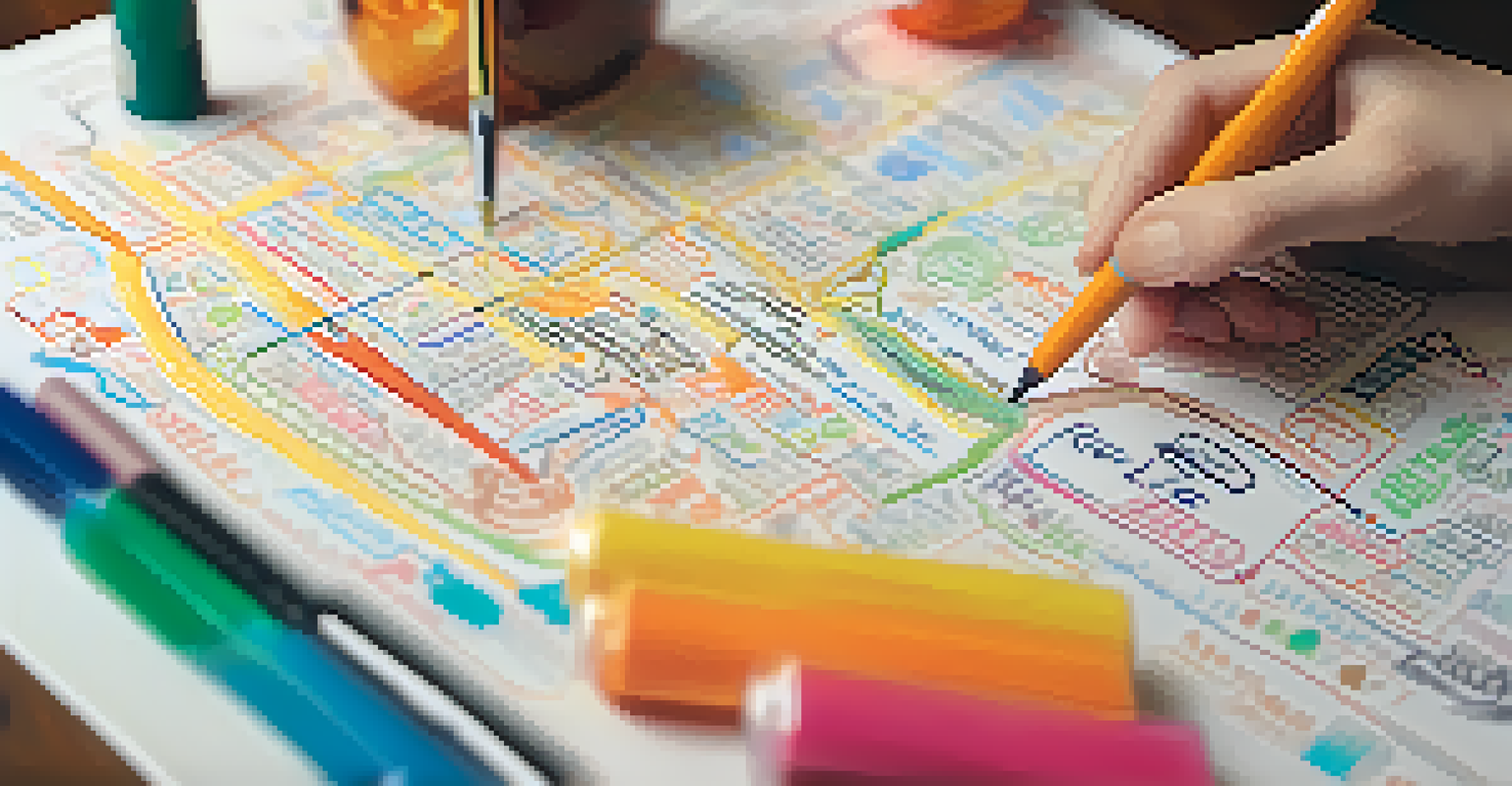Understanding Life Mapping: A Guide to Visualizing Your Journey

What is Life Mapping and Why It Matters
Life mapping is a visual tool that helps you chart your personal journey, including your goals, milestones, and experiences. Think of it as a roadmap that guides you through the various phases of your life. It’s not just for personal reflection; it serves as a powerful method for planning your future.
The journey of a thousand miles begins with one step.
By visualizing your life, you can gain clarity on where you’ve been, where you are now, and where you want to go. This process can help you identify patterns or themes in your experiences that might not be apparent at first glance. In essence, life mapping empowers you to take control of your narrative.
Additionally, life mapping is beneficial for setting specific, actionable goals. When you see your journey laid out visually, it becomes easier to create a coherent plan that aligns with your values and aspirations.
The Benefits of Creating a Life Map
Creating a life map offers numerous benefits that can enhance your personal growth. For starters, it fosters self-awareness, allowing you to recognize your strengths and weaknesses. This insight can be invaluable when navigating life's challenges and making informed decisions.

Moreover, a life map serves as a motivational tool. By visualizing your dreams and aspirations, you can keep your focus on what truly matters to you. It can act as a daily reminder of your goals, helping you stay committed to your path.
Life Mapping Enhances Self-Awareness
Creating a life map fosters self-awareness by helping you recognize your strengths and weaknesses.
Lastly, life mapping can facilitate better communication with others. When you can articulate your journey and vision clearly, it becomes easier to seek support from friends, family, or mentors who share your values and can assist you on your path.
Essential Tools for Life Mapping
To start your life mapping journey, you don’t need fancy software—just a few basic tools. A simple piece of paper and some colored markers can be incredibly effective. The act of drawing your life map engages your creativity, making the process enjoyable and personal.
Life can only be understood backwards; but it must be lived forwards.
Alternatively, digital tools like mind mapping software or apps can help you create a more polished life map. These tools often come with templates and features that allow for easy editing and sharing. It’s all about finding what works best for you.
No matter the medium, ensure that your chosen tools allow for flexibility. Life is ever-changing, and your map should evolve as you do. This adaptability will keep your mapping practice relevant and useful over time.
Steps to Create Your Life Map
Creating a life map can be broken down into simple steps. Begin by reflecting on your past experiences—think of key moments that shaped who you are today. Jot down significant events, achievements, and challenges that stand out.
Next, outline your present situation. What are your current goals, values, and priorities? This reflection will provide a foundation for envisioning your future. It's essential to be honest with yourself during this process.
Visualize Goals for Clarity
Life mapping allows you to visualize your journey, making it easier to set actionable goals aligned with your values.
Lastly, envision your future and map out your aspirations. Consider both short-term and long-term goals, and visualize the steps you’ll need to take to reach them. This clear picture will serve as your guiding star moving forward.
Incorporating Milestones into Your Map
Milestones are crucial elements in your life map, acting as markers that signify progress. By identifying and celebrating these milestones, you create a sense of achievement that can motivate you to continue onward. Think of them as checkpoints on your journey.
When setting milestones, be realistic and specific. Rather than saying, 'I want to be fit,' you might set a milestone like, 'I will run a 5K in six months.' This specificity will help you measure your progress and adjust your plan as needed.
Additionally, remember to review and update your milestones regularly. Life is dynamic, and what was important to you last year might not hold the same weight today. This ongoing process ensures that your life map remains relevant and aligned with your evolving goals.
Visual Elements to Enhance Your Life Map
Visual elements play a significant role in making your life map engaging and easy to interpret. Incorporating colors, symbols, or images can breathe life into your map and make it more personal. For instance, using different colors for various life areas can help you quickly identify where you’re thriving and where you might need more focus.
You can also use metaphors or imagery to represent your journey. If you see your life as a river, for example, you might draw winding paths to symbolize the ups and downs you’ve encountered. This creativity can transform a simple map into a powerful visual representation of your life.
Regular Updates Keep It Relevant
Maintaining and revising your life map ensures it accurately reflects your evolving experiences and aspirations.
Don’t shy away from personal touches—adding photographs or quotes that inspire you can make your map feel more meaningful. These elements not only enhance its aesthetic appeal but also serve as motivation during tough times.
Maintaining and Revising Your Life Map
A life map is not a static document; it’s a living reflection of your journey. Regularly revisiting and revising your map ensures that it accurately represents your experiences and aspirations. This practice allows you to acknowledge growth and recalibrate your goals as necessary.
Consider setting a specific time each month or quarter to review your life map. During this time, reflect on your progress, celebrate your milestones, and make adjustments to your goals. This habit will keep you engaged with your journey and motivated to keep moving forward.

Remember, it’s okay for your map to change. Life is full of surprises, and your journey may take unexpected turns. Embracing this fluidity can lead to new opportunities and experiences that enrich your life in ways you had not anticipated.